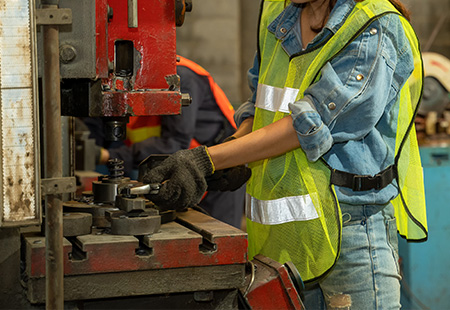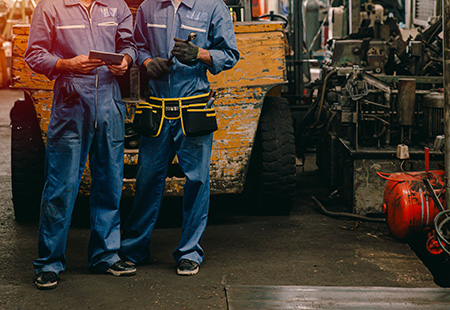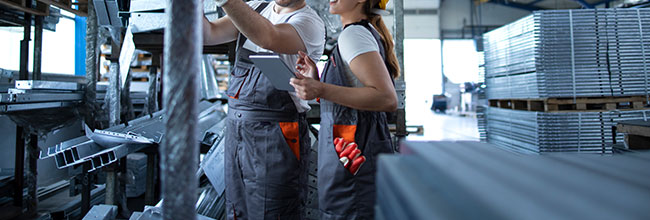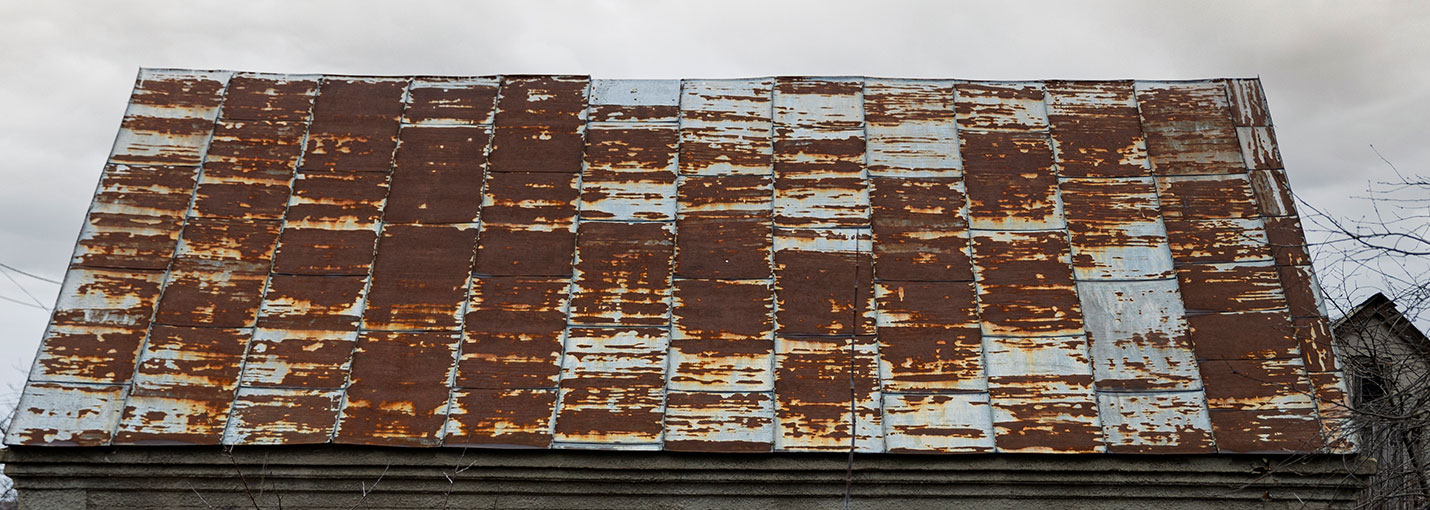Asbestos has been used by humanity for millennia in a variety of applications. However, the process and development of asbestos use have taken many turns and seen many innovations before the regulation and bans in America in the late 20th century. Because of this, it’s worthwhile to step back and consider the status and use of asbestos in the 1800s. During this time, we’ll see some of the essential trends that led to the explosion of asbestos use in the 19th and 20th centuries.
The long and sordid history of asbestos use around the world.
| El amianto es muy resistente al calor, la presión y la corrosión, por lo que se utilizó en muchos productos, vehículos y edificios. En particular, muchos lugares de trabajo como fábricas, refinerías, fundiciones y astilleros implican grandes cantidades de calor y fueron construidos con mucho amianto. | |||
  |   |   |   |
The Backdrop of 1800s Asbestos
It’s important to start by asking the fundamental question: what exactly is asbestos? It may surprise you to learn that asbestos is actually a term to describe several different things. In fact, asbesto is an umbrella term used to describe a group of various silicate minerals that occur naturally in the earth. Today, the term asbestos is used interchangeably to refer to six different kinds of asbestos that make up either the serpentine or amphibole groups of asbestos. These two terms are given to describe the shape of asbestos fibers, either curly (serpentine) or needle-like (amphibole).
“Algunas fibras de asbesto pueden pasar por alto... las defensas naturales de su cuerpo... y alojarse en lo profundo de sus pulmones. Esas fibras pueden permanecer en su lugar durante mucho tiempo y es posible que nunca se eliminen”.Fuente: Asociación Americana del Pulmón |
Ancient Uses of Asbestos
While the ancient Greek term “asbestos” (meaning indestructible) was coined and popularized only a few hundred years ago, the understanding of asbestos and its durable qualities was well-known by ancient cultures. For example, during the Stone Age, the ancient Kiukainen culture in the region of Finland used asbestos fibers for design elements in decorative pottery. Other cultures, including Egyptian, Roman, and Chinese used asbestos for things like shrouds, lamp wicks, and cloth.
Las personas que trabajaron en estas industrias antes de mediados de la década de 1980 tienen un mayor riesgo de desarrollar enfermedades relacionadas con el asbesto:
| Construcción | Fábricas | Fundiciones | Refinerías | Astilleros | Minería / Molienda |
| Demolición | Aislamiento | Trabajadores del acero | Instalación de tuberías | Construcción naval | Mecánicos |
  |   |   | |||
| Techumbre | Textiles | Trabajadores del hierro | Calderas | Extinción de incendios | Reparación de frenos |
| Piso | Cemento | Electricistas | Reparación de juntas | Ferrocarril | Climatización |
Desafortunadamente también lo hacen sus familias.
The Booming of Asbestos in the 1800s
Besides some of these well-known applications of asbestos, it seems that the full potential of asbestos was under-realized in the centuries prior to the 1800s. This does not mean that asbestos was not used, but it seemed to remain a regional phenomenon for cultures located close to asbestos deposits. Moreover, asbestos was more commonly used in small-scale everyday applications like pottery; the large-scale asbestos production industry we know of today was not yet up and running, but it was quickly coming into view.
“Todas las formas de asbesto son cancerígenas para los humanos”. 1
International Mining Efforts and the Asbestos Industry
In the 19th and 20th century, industrialists were on the hunt for asbestos mines around the world.
During the 1800s, companies began to realize the widespread possibilities of establishing asbestos mines as a way to harvest asbestos fibers for various manufacturing applications. These mines began to be established worldwide, especially throughout Canada, Italy, and various countries throughout South Africa.
The use of asbestos in the textile industry signaled the pivot of the mineral into its incredible economic importance we are familiar with today. The story is said to start with Italy’s patented development of asbestos thread (spinning, weaving, twisting) in the late 1860s.
Compartir una casa o un vehículo con alguien que usa ropa contaminada con asbesto lo pone en riesgo de contraer enfermedades relacionadas con el asbesto.3 2
The Industrial Revolution was an Asbestos Revolution
It’s not so much this process itself, but the chain reaction of different countries in the following years that really situated asbestos at the heart of the Industrial Revolution. The reason for this is that the shift from hand to machine manufacturing required the need to maintain and protect machines from their intensive manufacturing processes. In other words, machinery, piping, and other components require protection from high heat and fire.
“Por lo general, quienes desarrollan enfermedades relacionadas con el asbesto no muestran signos de enfermedad durante mucho tiempo después de la exposición”.Fuente: Instituto Nacional del Cáncer (NIH)3 |
Paving the Way for the Construction Industry
The solution was asbestos, and one of the first industrial examples of this was the use of asbestos to heat-proof steam boilers. This protected machinery from getting too hot, but asbestos was also used to wrap the piping systems of boilers in order to keep water hot. This paved the way for using asbestos in insulation for attics and plumbing later on in the construction industry, as the early usage of asbestos in boiler systems proved the incredible insulating qualities of the mineral.
  |
| Casi todos los edificios construidos antes de mediados de la década de 1980 contenían productos y materiales de construcción de asbesto. |
  |
Not only did the circumstance of asbestos mining efforts provide the ability to supply Industrial sites with a fireproofing material to keep their machines running around the clock but the Industrial Revolution also meant that manufacturing technology now existed for asbestos-containing materials.
This marked the shift from using asbestos in small-scale utility applications like pottery and cloth to high-yield applications like construction and machinery insulation. Asbestos quickly shifted from a primitive resource to an industry-standard in the majority of manufacturing applications.
El asbesto no tiene sabor ni olor.
Es posible que no sepa que lo está respirando.


Africa: The Source of the UK’s Asbestos Industrialism
Turner & Newall – an early asbestos manufacturer
Some of the more popular companies found a way to get into the asbestos industry while it was still a niche industry by staking a claim in South Africa. Turner and Newall, a British company, is one example of this. Founded in 1871, T&N became a key source of asbestos manufacturing, with trades including boilermakers, ironworkers, steamfitters, pipefitters, insulators, steel workers, and factory laborers. The company saw widespread demand in the late 1800s and early 1900s, eventually leading to T&N’s purchase of South African land in order to establish an asbestos mining facility. Part of this availability had to do with Britain’s involvement in the colonization of South Africa, and the influence of asbestos was so widespread that even a $10 Bill from the Central Bank of Swaziland once displayed the asbestos mine that was so central to the economy of that region.
¿Califica usted para una compensación?
Descubra rápida y fácilmente cómo estuvo expuesto buscando en WARD, la base de datos de asbesto más grande del planeta.
BÚSQUEDA GRATUITA >Henry the Innovator
Johns Manville: The world’s largest asbestos company
One of the most famous (and infamous) companies in asbestos history is Johns-Manville. This company began in the late 1850s with Henry Ward John’s first patented product, asbestos roofing shingles. Ironically, Henry died from what is now believed to be the lung disease asbestosis in 1901, making him one of the first victims of the asbestos-containing products associated with Johns-Manville in the coming decades.
Perhaps ironically – Henry Johns, founder of the world’s largest asbestos company, died of asbestosis.
Along with the first success of shingles, JM eventually became one of the industry standards for boiler wraps and other asbestos applications that were being popularized in the 1800s.
“Algunas fibras de asbesto pueden pasar por alto... las defensas naturales de su cuerpo... y alojarse en lo profundo de sus pulmones. Esas fibras pueden permanecer en su lugar durante mucho tiempo y es posible que nunca se eliminen”.Fuente: Asociación Americana del Pulmón |
Asbestos in Canada
The final important piece in the makings of asbestos’ widespread popularity in the 20th century has to do with the discovery of asbestos in Quebec Canada. This discovery in 1860 led to mining efforts in 1878 at Thetford Mines. While asbestos operations in Canada have since declined within the era of various national bans, Quebec continues to serve as a mining site in the industry.


Health problems associated with asbestos (it is a carcinogen).
Los riesgos para la salud de la exposición al asbesto pueden incluir:
| Mesotelioma: Cáncer del mesotelio, la capa delgada de tejido que rodea los órganos del cuerpo. Solo se sabe que este cáncer es causado por la exposición al asbesto. | Cáncer de pulmón |
| Cáncer de laringe: Cáncer de laringe (sección de la garganta llamada laringe) | Cáncer de ovarios |
| Cáncer de estómago | Cáncer de colón |
| Cáncer de faringe | La Asbestosis: una enfermedad pulmonar crónica asociada a la exposición al asbesto |
| Enfermedad Pulmonar Obstructiva Crónica (EPOC) | Atelectasia (collapsed lung) |
| Derrame pleural (acumulación de líquido alrededor de los pulmones) | Derrame pericárdico (acumulación de líquido alrededor del corazón) |
Compensation is available for asbestos exposure.
Lessons to learn from the history of asbestos in the 1800s
While these examples of asbestos in the 1800s may seem like unrelated facts, it is important to consider them from a bird’s eye view. Together, they tell the story of how patenting, mining discoveries and the innovations of the Industrial Revolution paved the way for an explosive wave of production across the world.
Going into the 1900s, no longer would asbestos be considered a niche industry or a cultural icon. Instead, it would become the industry standard in construction and manufacturing, making it a notorious material in homes, schools, and workplaces.
| El amianto causa cáncer. Los investigadores de la salud están aprendiendo cómo hacerlo. how. Los estudios demuestran que las fibras de amianto se incrustan en el tejido corporal:
|
Unfortunately, this wave of supply and demand of asbestos made possible by the discoveries and innovations of the 1800s would outpace the supply of medical research. The same companies that made fortunes from the asbestos industry were well aware of the dangers posed to their workers and their customers.
Unfortunately, this information was ignored and suppressed for much of the 20th century. Thousands who suffer from asbestos-related diseases today can still benefit from the bankruptcy trust funds established by these defunct industry leaders, but the damage has been done.
Más de $ 30 mil millones todavía están disponibles (sin demandas. Sin tarifas a menos que reciba dinero. Sin riesgos). Haga su reclamo.   |
The Miracle Mineral / The Monster Mineral
Many of the once-thriving asbestos mining sites have been dismantled or remain in ruins, but they represent a peculiar era of human history that was only made possible by the fascinating chain of events that took place in the 1800s.
AsbestosClaims.Law
En AsbestosClaims.Law, nuestra misión de asegurar una compensación para las víctimas del asbesto es más que profesional;es personal.
Nuestro fundador, Justinian C. Lane, conoce de primera mano los efectos devastadores del asbesto.
Tanto sus abuelos como su padre, todos trabajadores del asbesto, fallecieron de cánceres inducidos por el asbesto sin darse cuenta de su elegibilidad para juicios por asbesto u otras formas de compensación.
Nuestro objetivo es evitar tales trágicos descuidos informando y guiando a las víctimas y sus familias a través de sus opciones legales.
Si usted o sus seres queridos han sufrido como resultado de la exposición al asbesto, podría ser elegible para una compensación considerable. Estos fondos podrían cubrir tratamientos médicos, servicios de remoción de asbestos y salvaguardar su salud.
Además, los fideicomisos de asbesto ofrecen una compensación sin necesidad de un juicio, brindando un camino más rápido y sencillo hacia la justicia.
Comuníquese con nosotros en [email protected] o (206) 455-9190 para obtener ayuda con su reclamo. Ofrecemos escucha compasiva, explicaciones claras y no cobramos un centavo a menos que ganemos su caso.
Más allá de las demandas legales, también asesoramos sobre discapacidad de veteranos, seguridad social y protección laboral como compensación de trabajadores, FELA, y La ley de Jones para trabajadores marítimos.
No hay riesgo ni costo para conectarse con nuestro equipo experimentado sobre sus derechos. Nuestro compromiso con su bienestar significa que no cobramos honorarios a menos que reciba una compensación.
| Para más consultas o inquietudes sobre el asbesto, explore nuestro sitio web y página de YouTube, con infografías, videos y respuestas a preguntas comunes sobre temas relacionados con el asbesto. |
También presentamos WARD, la base de datos de investigación mundial sobre el asbesto. Es el recurso más completo de información relacionada con el asbesto.
WARD ayuda a identificar posibles escenarios de exposición, productos que contienen asbesto y puede indicar los tipos y posibles montos de compensación que puede tener derecho a recibir.
1 IARC Working Group on the Evaluation of Carcinogenic Risks to Humans. Arsenic, metals, fibres, and dusts. IARC Monographs on the Evaluation of Carcinogenic Risks to Humans. 2012 ;100(Pt C):11-465. PMID: 23189751.
2 Anua, S.M., Semple, S., Shakri, S.F.M., Safuan, S., Mazlan, N. and Asri, A.A.M., 2019. A review of the take-home exposure pathway of workplace hazards. International Journal of Medical Toxicology & Legal Medicine, 22(3and4), pp.13-19.
3 Instituto Nacional del Cáncer (NIH) Hoja informativa sobre asbesto.




